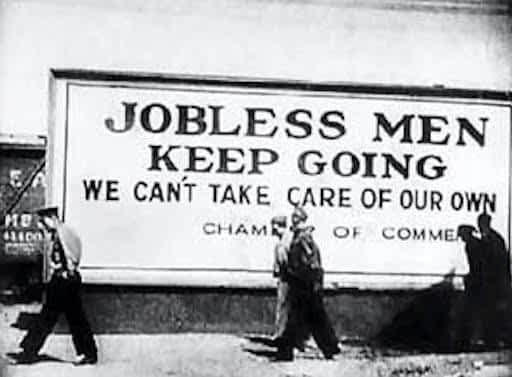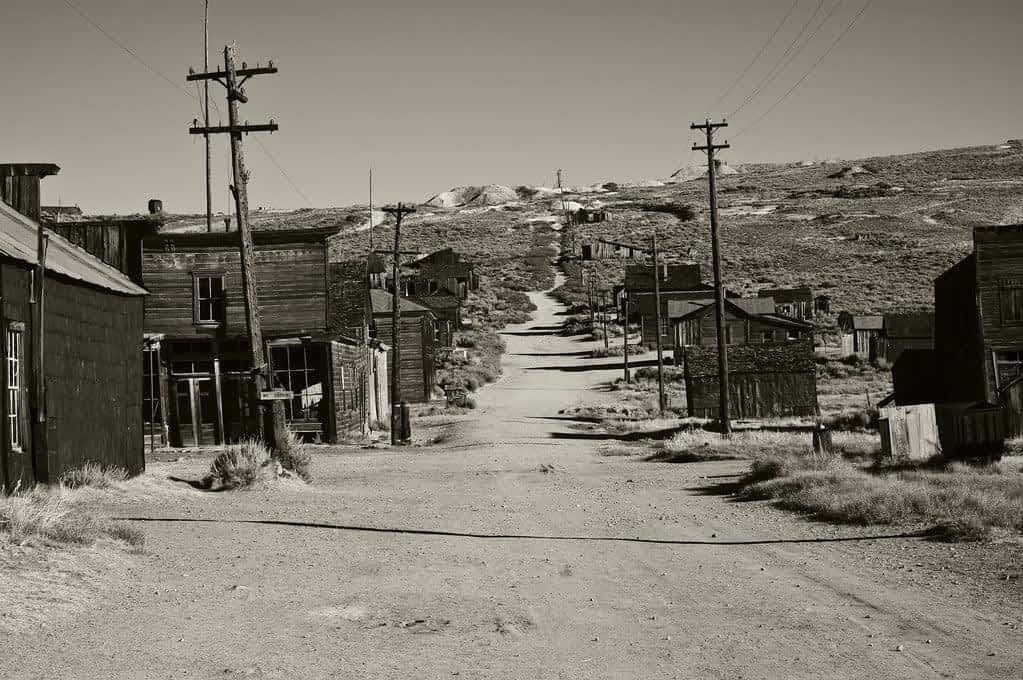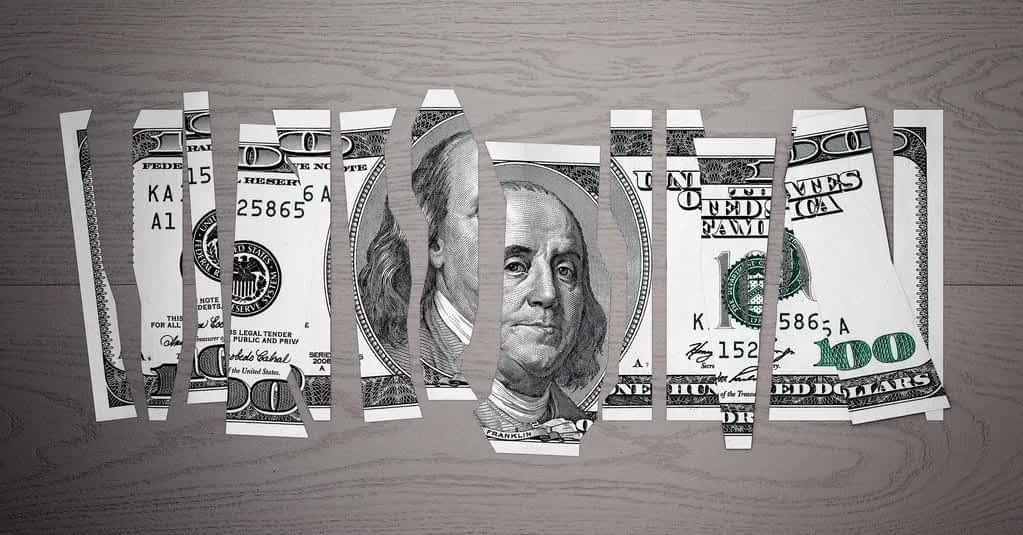Great Depression 2.0: 30 Frugal Lessons For Hard Times
How did people during the Great Depression era manage a frugal life, and what financial lessons can we learn from their experiences that we can use today?
As a child, I used to sit wide-eyed at my grandmother’s knee, listening to her captivating tales of growing up during the Great Depression. I still chuckle to myself once in a while when I remember her closet full to the top with toilet paper! I guess that’s one thing we never want to go without. Covid-19 reaffirmed this with the “Great Toilet Paper Shortage of 2020.”
Her frugal lessons of making do with what little they had, of stretching every penny to its limit, and of finding joy in the simplest of things left a lasting impression on me. Little did I know that those stories would later become my guide to living a thrifty but fulfilling life in the modern world.
As someone who tries to see the sunny side of life, when times are financially difficult, I try to see saving money as a game. How good am I at this game? Honestly, I can pinch a penny until it screams when I have to. I don’t enjoy my times being poor, but might as well make the most of it , and try to have fun with the challenge of seeing how good we can get at saving money.

💡Key Highlights: What You’ll Learn from This Article
- Timeless financial lessons from the Great Depression that still apply today
- Smart, practical frugal habits to stretch your budget and cut waste
- Simple DIY strategies for saving money on food, home, and energy
- Creative ways to earn income and build self-sufficiency during hard times
- Modern tweaks to classic Depression era survival tactics for today’s world

Depression Era Financial Lessons Are More Than History
The Great Depression was one of the hardest times in American history. After the stock market plummeted in 1929, everything changed: jobs vanished overnight, banks went under, and families suddenly found themselves scrambling just to get by. It wasn’t just an economic crisis; it was a full-blown survival test.
Back then, being frugal wasn’t a trendy lifestyle choice – it was the only way to survive. People had to get incredibly creative with what little they had. They reused everything, wasted nothing, and found clever ways to make their money stretch further than they ever thought possible.
In this post, we’re taking a look back at that Depression era and the real-life financial lessons it taught so many. It’s not just history, it’s wisdom we can still use today. We’ll dive into 30 down-to-earth, practical tips for living more simply and spending more mindfully, all inspired by the resilience and grit of those who weathered the storm of the Great Depression.
These frugal lessons weren’t just saving money, they were about staying strong when the world around you was falling apart. Let’s learn from their strength and find ways to bring that same mindset into our own lives.

Financial Lessons the Great Depression Can Teach Us Today
The people who lived through the Great Depression didn’t just survive – they adapted, got creative, and completely reshaped how they lived day to day. Their hardships gave rise to powerful financial lessons that still make sense in today’s world of rising prices, unexpected expenses, and economic uncertainty.
These frugal lessons weren’t about being stingy; they were about making the most of what you had, stretching every dollar, and relying more on community and creativity than consumerism. If you’re looking to save money, live more intentionally, or just feel more in control of your finances, the survival tactics from the Depression era have a lot to offer.
Here’s how they did it, and how we can bring some of that wisdom into modern life:
✔️Growing Your Own Food
When grocery prices soared, families didn’t just cut coupons; they grew gardens. Even small backyard plots provided fresh vegetables and herbs, helping folks eat well on next to nothing. These days, container gardening or community garden plots can still cut grocery bills and offer peace of mind.
✔️Fixing Instead of Tossing
Back then, people didn’t replace things just because they broke, they learned to repair, reuse, or repurpose them. That old Depression era mindset is a reminder that buying new isn’t always necessary. A little effort can save a lot.
✔️Sticking to a Real Budget
Families kept tight control over every single cent. They tracked their spending carefully and avoided going into debt unless absolutely necessary. It’s a financial lesson that still holds up: knowing where your money’s going is the first step toward having more of it.
✔️Making DIY Cleaners and Solutions
Cleaning products weren’t a priority during hard times, so people made their own with whatever was already in the house—like vinegar, baking soda, and lemon juice. Not only is this less expensive, but it’s also better for the environment (and your lungs).
✔️Never Letting Food Go to Waste
Leftovers were a treasure, not trash. People got creative with “second life” meals—soups, stews, casseroles—anything to stretch food further. Learning to love leftovers is still one of the easiest frugal lessons to adopt today.
✔️ Cutting Down on Electricity Use
Turning off lights, using candles or oil lamps, and doing without the luxuries we now take for granted was normal. Today, watching your energy use can still lead to big savings over time.
✔️Swapping and Bartering with Neighbors
Cash was tight, so people traded services and goods with neighbors. One person might fix a roof in exchange for eggs. It was simple, effective, and built stronger communities—something we could use a little more of today.
✔️Shopping Secondhand
Thrift stores and hand-me-downs were the norm, not the exception. Depression era families knew that good quality didn’t have to be brand new. These days, secondhand markets are thriving again, and for good reason.
✔️Preserving Food for Later
Canning, drying, and storing food was a common way to avoid waste and stay fed through the winter. With rising food costs today, learning some basic food preservation can go a long way.
✔️Walking Instead of Driving
Gas was expensive and often unavailable, so people walked, biked, or shared rides whenever possible. It’s a reminder that owning a car isn’t always necessary, and that cutting back can help your wallet and your health.
These small changes might seem simple, but they come from a time when simplicity was the only option. The Great Depression pushed people to rethink everything, and many of those Depression era habits are still smart, sustainable, and seriously cost-effective today.

Making a Living During the Great Depression (and What We Can Learn From It)
When the Great Depression hit, traditional jobs dried up fast and people had to get clever to survive. There was no climbing the career ladder; it was more like doing whatever it took to put food on the table. What’s wild is how many of those Depression era income tricks still apply today, especially if you’re looking to save money, boost your income, or just live a little more resourcefully.
These financial lessons weren’t taught in schools – they were learned the hard way, through sweat, hustle, and a lot of creativity. If you’re looking for frugal lessons that go beyond cutting coupons, take a look at how folks back then earned a living amid some of the worst economic conditions in history.
✔️Taking on Small Jobs Wherever They Could
Mowing lawns, washing windows, cleaning houses – you name it. Nothing was too small. These odd jobs weren’t glamorous, but they helped families stay afloat. In today’s world, side gigs still offer a quick way to bring in extra cash when things get tight.
✔️Selling Handmade Goods
People with a knack for crafts, sewing, or woodworking made and sold their wares to earn a few dollars. It was a simple but powerful example of turning talent into income. Today, platforms like Etsy prove this old-school method still works.
✔️Freelancing Long Before It Was a Trend
Whether it was fixing things, writing, or offering services like tutoring or painting, freelance work became a lifeline. The Depression era version of the gig economy gave people the freedom to work on their own terms, and that concept is still going strong.
✔️Renting Out Extra Space
If you had an extra room, you rented it. Simple as that. People used every inch of their home to make money. It’s one of those financial lessons that still makes sense today, especially in cities where rent is sky-high.
✔️Selling Homegrown Food
Farmers and even backyard gardeners sold their produce at local markets. Not only was it frugal and sustainable, but it also turned excess into income. If you’ve got a green thumb, this Depression era practice is a smart way to earn and save.
✔️Disgards for Dollars
Nothing was considered useless. People collected discarded metal, glass, and other materials to sell. It was gritty but effective. Today, that spirit of turning “trash” into treasure still lives on in recycling, resale, and upcycling.
✔️Starting Tiny Businesses from Home
From baking bread to sewing clothes to offering repairs, people launched home-based businesses with almost no overhead. The Great Depression taught us that with a little skill and a lot of determination, you can make your own opportunities.

How the Great Depression Changed the Way We Handle Money (And Why It Still Matters)
The Great Depression wasn’t just a financial disaster – it completely rewired how people thought about money. When times got rough, the luxuries faded fast and the focus went to survival, simplicity, and smart choices. That era didn’t just leave behind stories of hardship, it gave us a lasting blueprint for living with intention and financial awareness.
A lot of the financial lessons born from that time still apply today. Sure, we’ve got apps, automatic deposits, and online banking now, but at the heart of it, the frugal lessons from the Depression era are just as powerful and practical.
Here’s how to apply them in everyday life:
✔️Create a Monthly Budget
Back in the Depression era, tracking every penny was a necessity, not just a nice idea. Today, budgeting is one of the most powerful financial lessons you can carry with you. Know what’s coming in, what’s going out, and where you can cut back.
✔️Build an Emergency Fund
People in the Great Depression learned the hard way that things can go south fast. Having a small financial cushion, just a few hundred dollars to start, can give you peace of mind and options when the unexpected hits.
✔️Live Below Your Means
This was a core rule for Depression era families. If you made $5, you figured out how to live on $4. It’s not about depriving yourself, it’s giving yourself breathing room and future freedom.
✔️Prioritize Needs Over Wants
When money’s tight, essentials come first. Even today, this frugal lesson is a necessity when your broke: groceries before gadgets, rent before retail therapy. It keeps you grounded and your finances steady.
✔️Automate Your Savings
Okay, they didn’t have auto-transfers in the 1930s, but if they did, they would’ve used them! Set up your bank to move a little into savings each payday so you’re always preparing for later, without having to think about it.
✔️Avoid Impulse Buying
In the Great Depression, there wasn’t much room for buying just because you felt like it. That mindset still holds value. Wait a day or two before making non-essential purchases. You might find you don’t need them after all.
✔️Choose Generic Brands
Back then, brand loyalty wasn’t a thing; whatever worked and was affordable got the job done. Generic and store brands can save you big money over time, and most of the time, they’re just as good as the name brands.
✔️Try the Cash Envelope System
This one comes straight out of the Depression era playbook. Separate cash into envelopes for groceries, gas, fun, etc., and when the envelope’s empty, you’re done spending. It’s a great way to stay on track and avoid overspending.
The truth is, many of us could use a little more Depression era wisdom in our financial lives. These frugal lessons aren’t about living in fear, they’re about living smarter, more intentionally, and with a little extra security in your back pocket.

Everyday Frugal Habits Inspired by the Great Depression
When you look at how people lived during the Depression era, it’s clear they didn’t waste a thing. Every dollar, every drop of energy was stretched and reused. It wasn’t just getting by, but getting creative. That mindset still makes a lot of sense today, especially when you’re trying to save money and live more intentionally.
These simple but powerful habits take a page right out of the Depression era and translate them into smart, modern financial lessons you can use right now:
✔️Reduce Food Waste
Use what you have before buying more. Plan meals around leftovers, and don’t let produce go bad in the back of the fridge.
✔️Repair and Repurpose
Instead of tossing broken or worn-out items, fix them or find a new use. This is one of the classic frugal lessons that saves money and reduces waste.
✔️Shop Secondhand First
Thrift stores, garage sales, and resale apps are full of gems—especially when it comes to clothes, furniture, and kitchenware.
✔️DIY What You Can
Make your own cleaning supplies, gifts, or even try your hand at basic home repairs. It’s less costly, often healthier, and surprisingly satisfying.
✔️Cut Utility Costs
Unplug electronics, switch to LED lights, use fans instead of cranking the AC, and make your home more energy-efficient overall. These small changes add up.
✔️Use Less Water and Power
Shorter showers, full laundry loads, and turning off lights when you leave the room might sound small—but they can make a real dent in your bills.
✔️Rethink Transportation
Carpool, walk, bike, or use public transportation when you can. Fuel costs add up fast, and reducing your car usage is better for your wallet and the planet.
✔️Buy in Bulk (When It Makes Sense)
Staples like rice, beans, and toilet paper are often less money in larger quantities. Just make sure you’ll actually use them.
✔️Cook at Home More Often
Limit takeout and restaurant meals. Batch-cook when you can, and lean into seasonal produce, it’s cost effective and fresher.
✔️Cancel What You Don’t Use
Streaming services, gym memberships, subscription boxes… do a quick audit and cancel anything that’s not pulling its weight.
✔️Visit the Library
Books, movies, music, and even classes, all for free. Libraries were a vital resource during the Great Depression, and they still are today.
✔️Barter, Sell, and Trade
If you’ve got a needed ability to help, or items you don’t need, see what you can trade or sell. It’s a throwback to the Depression era’s community-minded exchanges.
✔️Run Errands Efficiently
Plan ahead to save gas and time – group errands together instead of making multiple trips.
✔️Automate Bill Payments
Avoid late fees and missed payments by setting up automatic transfers. It’s one of those modern financial lessons that simplifies your money life big time.
Final Thoughts
These habits aren’t about living small – they’re living smart. The Great Depression taught people how to stretch what they had and make it work. Those same principles still apply today, proving that resilience, creativity, and intentional living never go out of style.

This post may contain affiliate links. I earn from qualifying Amazon purchases at no extra cost to you. This content is for informational purposes only and is not a substitute for professional advice. [Read full disclaimer.]
Thank you for reading this post, don't forget to subscribe!







